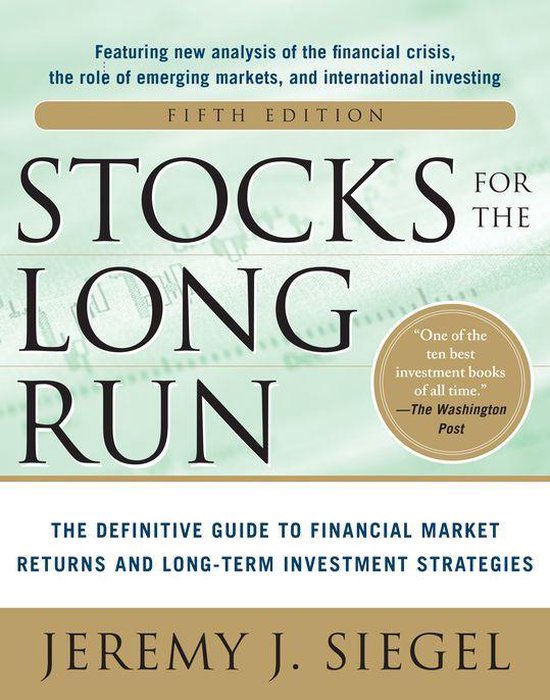
Stocks for the Long Run
“Stocks for the Long Run” by Jeremy Siegel is a comprehensive guide to the world of investing and the power of long-term stock ownership. Siegel’s central argument is that stocks have historically outperformed other asset classes over extended periods, making them a crucial component of any investor’s portfolio.
The book starts by emphasizing the historical resilience and growth potential of stocks, highlighting that despite short-term fluctuations, the stock market has consistently shown an upward trajectory. Siegel delves into data spanning centuries to demonstrate how stocks have surpassed bonds, gold, and other investments in terms of returns.
Siegel introduces the concept of the “Dividend Discount Model” to analyze stock valuations. He asserts that dividends play a critical role in the long-term growth of investments, helping investors weather market volatility. This ties into his broader argument that holding dividend-paying stocks can provide a reliable income stream, particularly during retirement.
Throughout the book, Siegel addresses common misconceptions and myths about investing. He debunks the notion that stocks are inherently risky, contending that over time, the risk diminishes significantly. He advocates for investors to embrace equities as a means of wealth accumulation, especially in light of inflation eroding the value of other assets.
Siegel also underscores the importance of global diversification. He suggests that a well-diversified portfolio across different countries and industries can mitigate risks and enhance returns. Moreover, he emphasizes that international investing provides exposure to rapidly growing economies.
The book evaluates various investment strategies, including growth versus value investing. Siegel highlights that a combination of both strategies can yield optimal resul
ts. He uses historical data to demonstrate the cyclicality of these approaches and emphasizes the importance of timing and patience.
Addressing concerns about market timing, Siegel promotes the idea that time in the market is more important than timing the market. His analysis shows that missing the best-performing days in the market can significantly diminish returns over the long run.
In conclusion, “Stocks for the Long Run” is a comprehensive exploration of the power of long-term stock ownership. Siegel’s insights are grounded in historical data and a deep understanding of market dynamics. The book encourages readers to overcome common investing myths and biases and embrace equities as a cornerstone of wealth accumulation. It serves as a valuable resource for both novice and experienced investors seeking to navigate the complex world of investing for long-term success.
Best regards,
Santiago